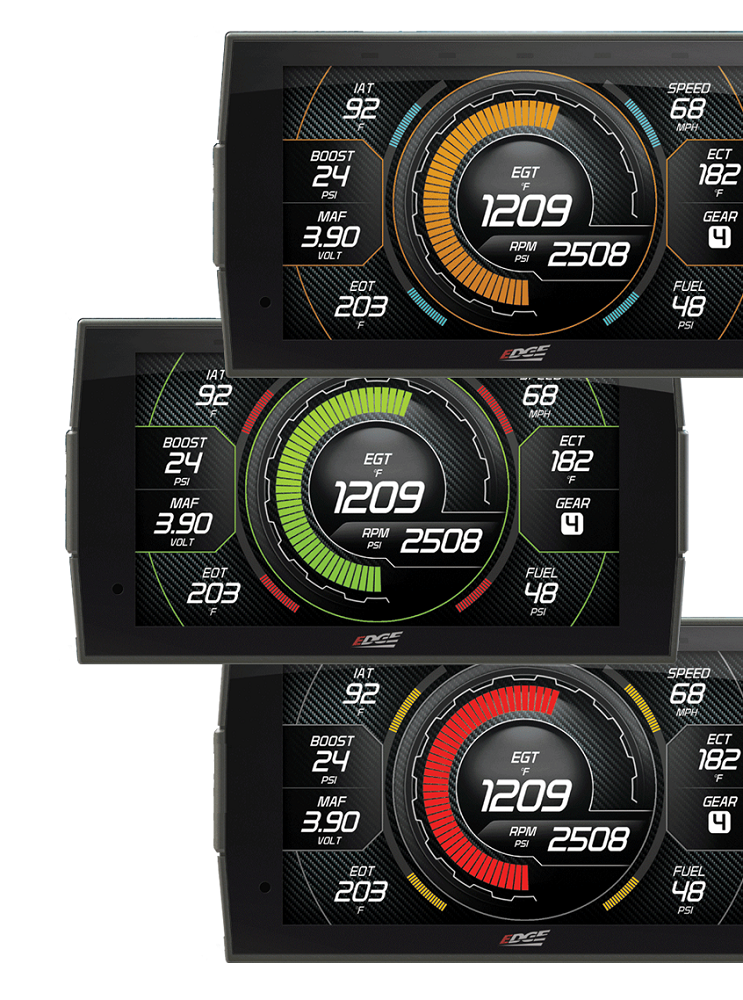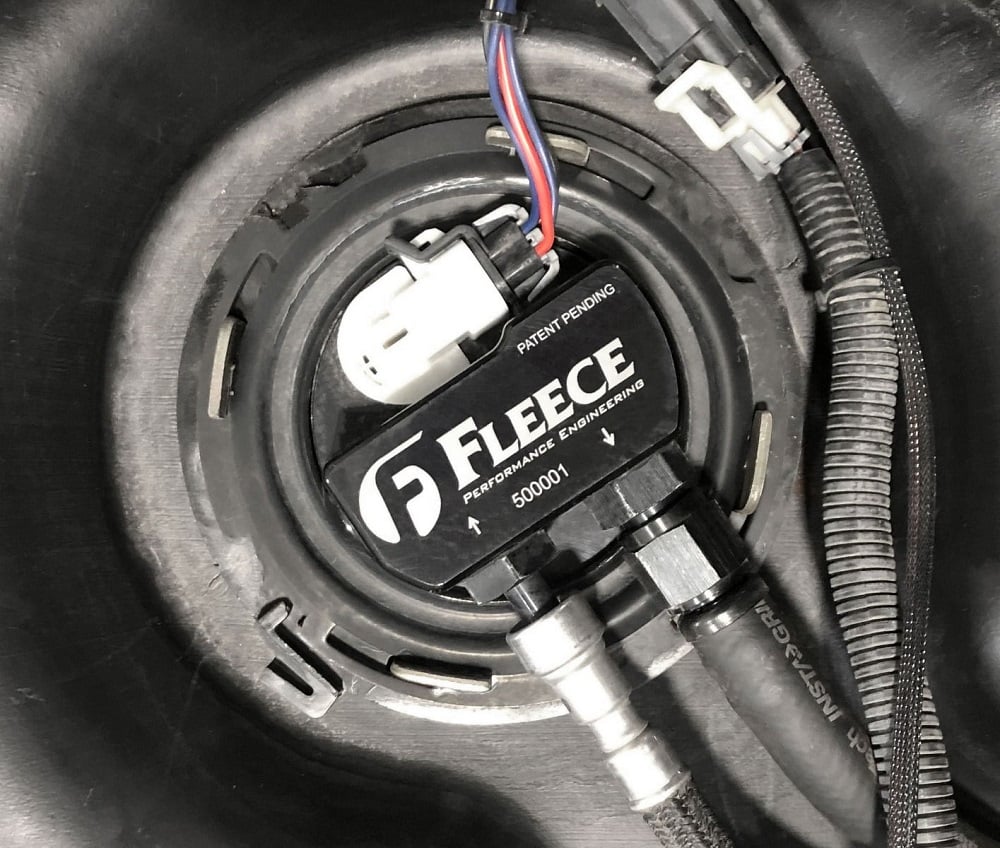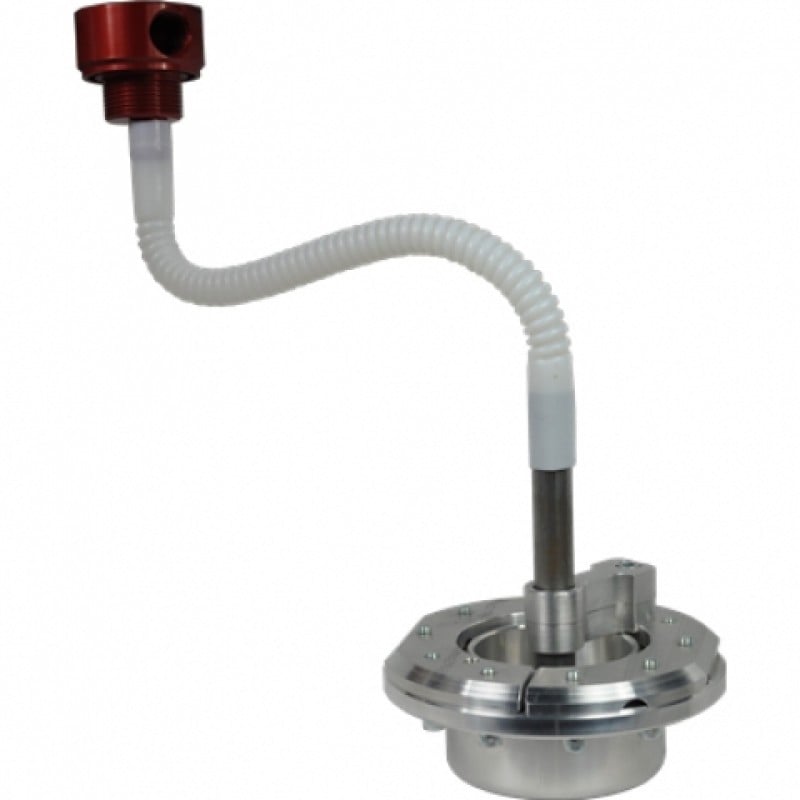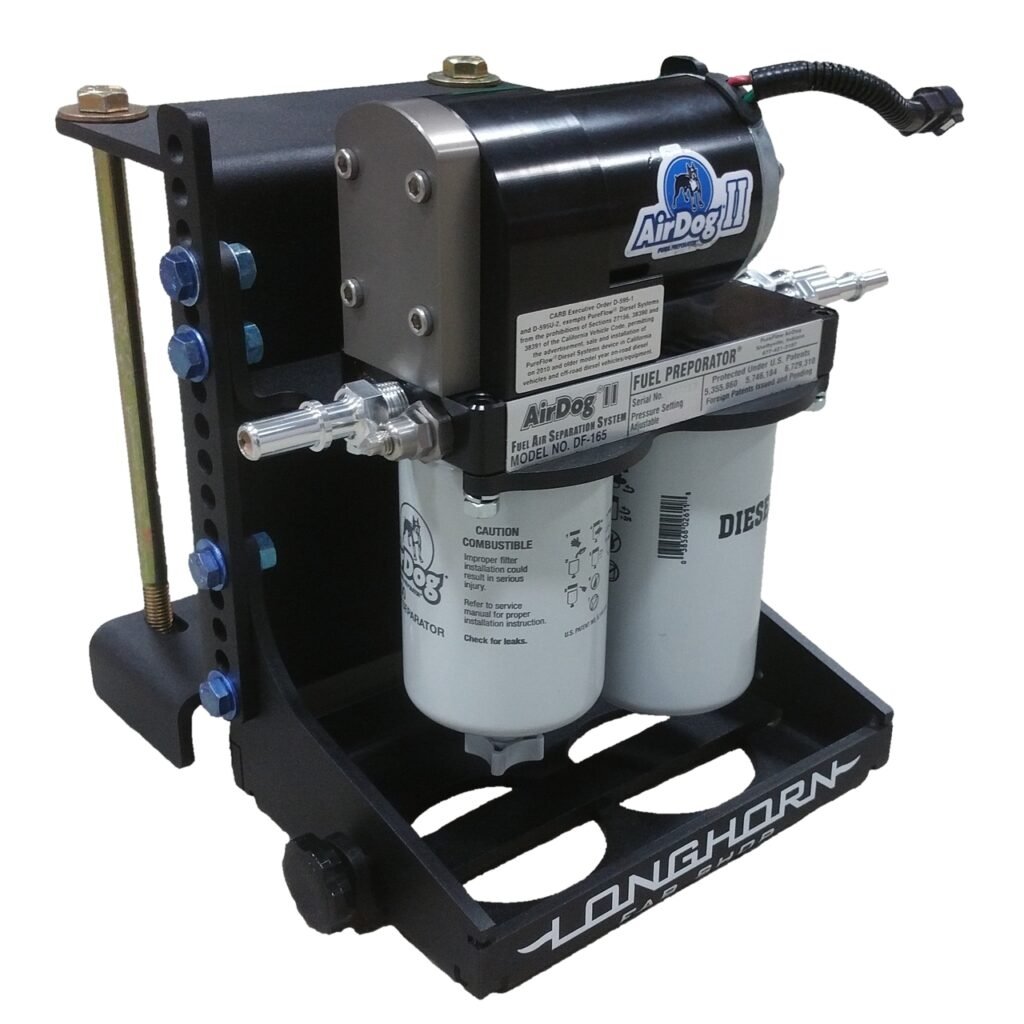GM did something a little different than Ram and Ford in their 6.6-liter common rail diesel, and it made quite a few people scratch their heads trying to figure out their logic. A lift pump is a low-pressure fuel pump that sits in or near the fuel tank, and it delivers fuel up to the high-pressure injection pump, which is driven by the engine. The injection pump raises the pressure of the fuel so it can be forced directly into the combustion chamber in tiny droplets where it gets ignited by the heat and pressure created by the rising piston. Both Cummins and Powerstroke diesel engines use a lift pump, but for some reason, GM decided they didn’t need one for the Duramax. The reason this is so perplexing is because the Bosch CP3 and CP4 injection pumps GM used without a lift pump were also used by Ram and Ford WITH a lift pump, and it wasn’t until the L5P debuted in 2017 that GM finally installed a lift pump on their trucks. So, what’s the big deal? GM made millions of Duramax diesels between 2001 and 2016 without a lift pump, and collectively, those engines will have driven billions of miles with no functional problems attributed to the lack of a lift pump.
The reason the Duramax can operate without a lift pump is because when Bosch designed the injection pump, they made it capable of pulling double duty. Inside both the CP3 and CP4 is a gear pump that feeds fuel into the high-pressure section, but the gear pump also creates suction that pulls fuel from the tank. On paper, this design works pretty well, but in the real world there are many situations where the lack of a lift pump can cause a problem, and sometimes, the driver won’t even notice. So, if you drive a 2001 to 2016 Duramax and you’ve been considering a lift pump upgrade, today is your lucky day. We’re going to cover it all: when you need a lift pump on a Duramax, the different styles available, along with different options and upgrades, and the benefits you will see after adding one.
Drain the Rail
If your Duramax is bone stock, chances are it will drive OK for a while without a lift pump. The problems start when you increase the horsepower output of the engine, since more horsepower is made by injecting more fuel. When the fuel demand goes up, the injection pump can no longer keep up with both of its jobs, and even something as small as a towing tune can cause problems in extreme conditions like a fully loaded climb up a mountain pass. The result will be a drop in rail pressure, sometimes by as much as half. The engine will still run, and in fact, the truck can still drive just fine, but the driver may notice a loss of acceleration. If you keep your foot buried in the throttle, a check engine light may turn on with a DTC for low rail pressure which is a dead giveaway that the engine is consuming more fuel than the injection pump can provide since its busy doing two things at once. A lift pump will cure this problem, but before you invest in the fuel system, it’s a good idea to record some data to confirm your suspicions.

The easiest way to tell if you have low fuel rail pressure is to plug in a scan tool or to install an OBD2 gauge monitor like the Edge Insight CTS3 or a Banks Data Monster and carefully watch two parameters: commanded fuel rail pressure and actual fuel rail pressure. During part throttle operation, the commanded fuel rail pressure will vary between 5,000 to 18,000 psi, and actual fuel pressure will closely follow. There will be a slight variance between the two, but for the most part, they will match. When you smash the accelerator pedal however, fuel demand skyrockets and the desired pressure will rise to near 26,000 PSI, but if you watch the actual fuel rail pressure, chances are its gonna quickly drop off to 50-60% of desired. This is known as draining the rail, and it’s just a sign that the engine is consuming more fuel than the CP3 or CP4 can provide on its own, but all it takes is a little help from a lift pump, and the truck will be stronger than ever.
What Kind of Lift Pump?
If you search our website for “Duramax lift pump”, you will notice there are many styles and brands available, and some are just a basic pump, while others have features like additional filtration, water separators, external regulators, or even a sump for the tank. If you’re new to the diesel scene, it can all be a bit confusing, but each has its place and it just depends on how you use your truck, and what modifications you have made.
The most basic style of lift pump is exactly what it sounds like: a pump that moves fuel from the tank to the engine. The simplest to install and most “factory” style pump on the market for a Duramax is the Fleece Powerflo in-tank lift pump. It installs in place of the stock fuel sending unit, and it’s held in place with the OE retainer, but inside the fuel bucket are two electric fuel pumps capable of delivering enough fuel to support 800 horsepower. Built into the top of the pump is a regulator that ensures fuel pressure is kept right at 15 psi, and its total volume of fuel flow is 170 gallons per hour. Factory style quick connect fittings are included to easily attach your stock fuel lines making installation a no cutting or drilling operation. The great thing about the Fleece pump is because its inside the fuel tank, there is virtually no extra noise, and its protected from the elements.

One major benefit to the Fleece in-tank lift pump is how clean and simple the installation is, but it still does rely on the factory fuel filter mounted on the engine to clean the fuel. Stock Duramax fuel filters can be a little on the costly side, and they do need to be changed about every 10,000 miles to prevent them from clogging up. It’s a common upgrade in the diesel world to convert your engine to use more readily available fuel filters from heavy equipment, and the gold (or yellow) standard is the Caterpillar 1R-0750. You can find ‘em just about anywhere for around $20, and they have a much larger capacity and finer filtration rating than the stock Duramax filter, but unfortunately it has a different thread size than the GM filter does. That problem can be solved with a kit from Sinister Diesel, which allows you to easily adapt a CAT fuel filter onto your 2001-2016 Duramax. For a little more than $100 you get an aluminum filter adapter, a genuine Cat filter, and a mounting spacer to make a little extra room for the wider filter. The Cat filter will trap particles as small as 2 microns and extend your filter change interval as well, making for a perfect upgrade to go along with the Fleece in-tank pump.
Air In Your Fuel?
Having clean fuel is important, but there are other contaminants like air and water regularly found in diesel that a standard fuel filter just won’t remove. Air or water in your fuel can lead to other problems like accelerated wear of your fuel system, and less than optimum fuel mileage, but there are two great products on the market that are designed to solve all those problems.
In addition to pumping fuel, a FASS Titanium or Airdog II-4G lift pump is designed to remove dirt particles much smaller than the stock fuel filter, but they will also separate any air or water that might be present in your tank. When the truck is running, they recirculate fuel to and from the tank so its constantly getting cleaner. This means only the purest fuel makes its way into your injection pump and the injectors, and in the case of the LML Duramax with its failure prone CP4, this can even lead to a longer lifespan of the injection pump. FASS and Airdog both make several different sizes of lift pump, but the most popular version from each brand is the 165 gallon per hour pump which will support a stock or modified truck. With your FASS or Airdog pump installed, you will no longer experience a loss in rail pressure under acceleration, but you also get an additional bump in horsepower and fuel mileage simply due to the fact that there is no longer air in your fuel.
Fuel Tank Sump?

One of the most popular and inexpensive upgrades you can do in conjunction with a lift pump is a tank sump, but what exactly does it do, and do you really need one? Here’s the deal: the Duramax draws its fuel from the tank through a suction line mounted to the top. Once inside, the suction line runs into a “bucket” that sits on the bottom of the tank right in the center. The purpose of the bucket is to act as a reservoir of fuel and always keep the suction tube submerged even when the fuel level is low or during acceleration. In theory, this design works great, but in practice, the stock bucket becomes less effective when you have less than a 1/4 tank of fuel, and occasionally the pickup tube can draw in air. This problem is exaggerated when running a lift pump with a higher flow rate, since the pump is constantly recirculating fuel in and out of the tank. The factory bucket and suction tube is simply too small to adequately support a lift pump, so a better long-term solution is needed.
This is where the fuel tank sump comes into play. Most sumps install by drilling a 3.5” hole in the bottom of the tank, and it attaches with a clamping mechanism that grabs the inside edge of the tank, and a series of bolts hold it all together with some O-rings to make a seal. The pickup point is now lower than the bottom of the tank, so no matter how low your fuel level gets, the pump always will draw in fuel. Most fuel sumps have at least a 1/2” port to support the flow demands of a larger aftermarket lift pump, and usually the external fuel line is run below the tank.
One sump that stands apart from the crowd is the FASS Sump and Suction Tube Kit. It features a billet aluminum sump that attaches to the bottom of the tank with ten 1/4” machine screws for an extremely strong attachment, but instead of running the fuel line exposed on the bottom of the tank where it might be venerable to damage, the kit includes a large internal suction tube that draws fuel from inside the sump. The tube runs inside the tank to a bulkhead fitting that gets installed on top, allowing the lines to be ran out of harm’s way. The bulkhead fitting on top has two ports, one for the suction tube, and the other for a return line from the lift pump, and when its mounted, the fuel lines are hidden from view, making for a much cleaner and safer installation. With the FASS sump and suction tube installed, you will be able to run your tank just about dry and still accelerate without losing any lift pump pressure.
Fuel Pump Mount & Skid Plate
One more accessory that will come in handy if you venture off the beaten path is a skid plate mount for your FASS or Airdog lift pump made by Longhorn Fab Shop. Because the filters sit exposed on the bottom of the lift pump, they can be susceptible to damage even if they are mounted above the bottom edge of the frame. All it takes is a rock or a tree root pushed up by the tire, and the fuel filter or water separator can be damaged. In the best case scenario it just puts a small dent in the filter, but if they get hit hard enough, you could puncture the filter and quickly drain all your fuel onto the ground at a rate of 165 gallons per hour. The Longhorn Fab Shop skid plate/mount is made from 1/8” steel and features grade 8 mounting bolts for a secure installation directly to the frame of your truck. Its powder coated black which means its corrosion resistant and there is even enough room to work with extended length filters.

L5P Filtration Upgrades
After 15 years of building Duramax trucks without a lift pump, GM finally learned their lesson and with the introduction of the L5P, they finally equipped their trucks with a lift pump. Much like a gasoline powered truck, the pump is mounted inside the fuel tank like you would expect it to be, and it even has enough volume to support high performance applications as well, and because it’s an OE design, it works great even if the tank is almost empty. The L5P can benefit from an improved fuel filter however, and once again, Fleece Performance comes to our rescue with a Fuel Filter Upgrade Kit for the 2017-2021 L5P. The kit allows you to remove the stock plastic filter canister and replace it with a Donaldson spin on fuel filter and water separator, so you won’t lose any functionality, but you will gain filtration down to 3 microns. The Fleece filter head connects to your stock quick connect fuel lines, and it even retains the OE fuel heater for cold climate operation.
To Lift or Not to Lift?
So, should every Duramax get a lift pump upgrade? I would argue the answer to that is yes. Even if you have a bone stock LB7 or a highly modified LML, a lift pump can help the injection pump focus on its main job, and when you add increased filtration and air separation into the mix, you can even extend the life of your injectors and injection pump. Owners with tuned trucks will no longer experience a drop in fuel rail pressure, and maximum power will be available whenever your right foot demands it. Your Duramax is an investment, and the right lift pump can help you protect it for many years to come.


We bought a 2003 Duramax Diesel 2500 HD
It needs a Lift Pump as it won’t start without priming the Prime Pump! We have replaced all fuel parts first so now down to Putting a Prime Pump in! Crazy!
Praying it works after we do that!
So does the lbz need it as well
I need the base on a air dog 2-4g I have pump and motor need base that pump is attached to and filters where can I find one air dog will not sell one,?